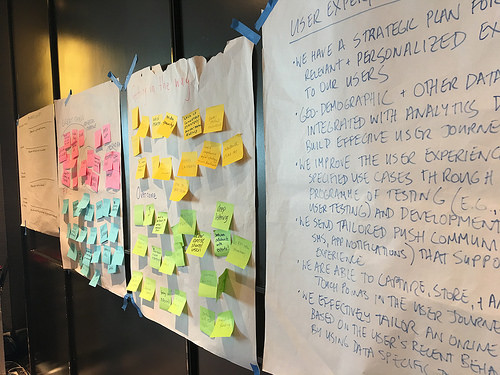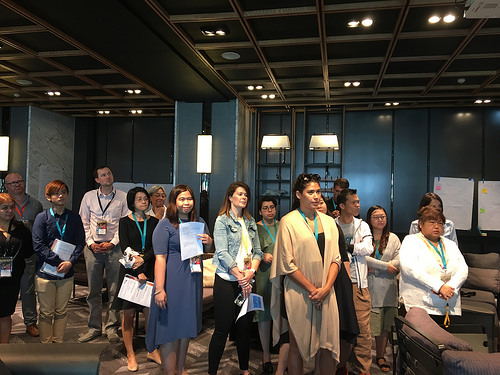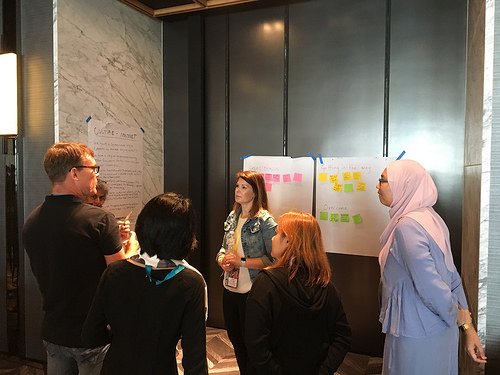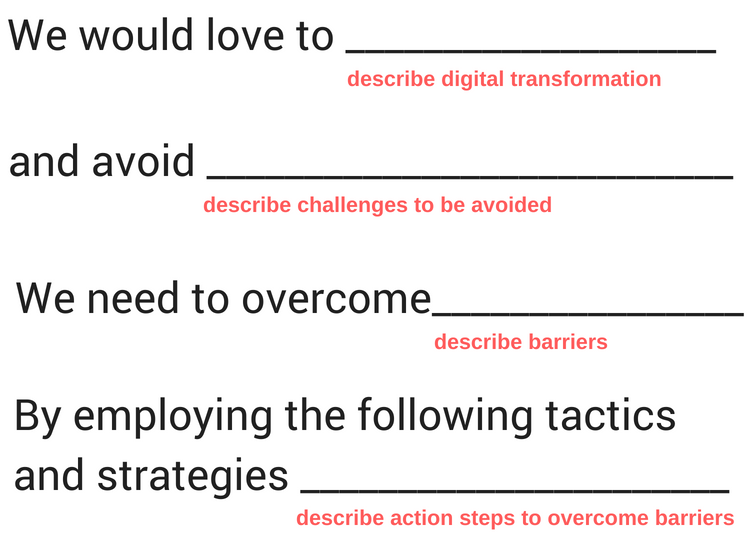
Last week at the IFC-Asia, I co-designed and facilitated a 90 minute workshop with Marco Kuntze titled “The Digital NGO: The Journey from Paper to Screen.” Jo Wolfe, Aseem Thakur, Gillian Tan, Cherisse Beh, Katie Bengaard, and Toral Cowieson joined our session as small group facilitators.
Just A Little Content To Get Started
There are different ways to design a participatory workshop. It could be 100% in that participants provide the content by connecting with others and sharing experience and knowledge. Another option is to briefly share some content or a framework to kick off the participant knowledge sharing. We opted for the latter.
We focused on digital transformation because incorporating digital has become essential for delivering on all aspects of a nonprofit’s mission, not just fundraising and communications but program delivery and governance. We designed a highly interactive workshop based on Jo Wolfe’s “NGO Digital Maturity Matrix,” an assessment tool that enables nonprofits to codify mindsets and skill sets required for moving along the path of digital transformation. The assessment helps nonprofits look at eight different areas: Technology, Content, Channels/Devices, Audiences, Analytics, User Experience, and Governance. Each section lists best practices and processes for being a digital nonprofit. The matrix enables your organization set a baseline and goals for improvement.
We kicked off the session with a brief overview of the framework by Jo Wolfe, who created it. Because the taking the assessment in full would require a lot more time than we had for the workshop, Jo prepared a high level summary. Something that you might use to introduce the assessment to the senior leadership team to get buy-in.
Opening Exercise

The session kicked off with a Spectragram exercise involving the full group. I learned this technique from Allen Gunn from Aspiration over ten years ago at 2007 Penguin Day. It is also used in education, although it is called something different, “The Human Continuum.”
The spectragram is typically used as a warm up and traditionally the facilitator identified a couple of provocative questions related to the topic being discussed and had people line up as to whether they agree or disagree with the statement. It is a useful method for getting participants to express a point of view, engage in debate, listen to others and hear another person’s different point of view. For training where you are focusing on a skill, it allows for folks to express their opinions (negative or positive) and not have debate get in the way of the instructional flow later on. My colleague, Dirk Slater, has written about how he applies the Spectragram technique in his technology/activist trainings. Others have also documented and used the technique or taught others how to do it.
A more participatory approach, and one that Allen Gunn uses, is to crowdsource provocative questions from participants. Have them self-organize into small groups of three or four people and use sticky notes to come up with some statements. Participants volunteer their question for the Spectragram.
Another way to use the Spectagram is to help you and participants better understand skill levels in the room. You ask participants to line according to a pre-determined scale. We used the digital maturity matrix and created a series of statements related to the small group topics and asked participants line up from 1 to 10, with 10 being completed the digital transformation journey and 1 just starting. This also helped participants think about what small group they wanted to join during the breakout groups.
Statements:
- User experience: We provide relevant and personalized experiences to our users and optimize this through an ongoing programme of testing.
- Fundraising campaigns: We launch and manage the digital aspects of fundraising campaigns, integrated across all relevant staff teams.
- Audiences: We have defined and accepted audience segments based on user attributes, behaviors and analytics and tailor our offer to these audiences.
- Culture and mindset (governance): We have digital expertise within the senior leadership team and board of trustees. These groups support and understand the strategic importance of digital.

Four Corners/Brainstorm Small Group Facilitation
The meat of the session was done in small group work using a technique called “Four Corners” where participants go to four different corners of the room to focus on a specific sub-topic. There are different approaches to assigning people to groups and facilitating small group discussions from assigning to letting participants self-organize. We chose the latter.
It is also important to have an experienced facilitator for the small group. We recruited people with both subject matter expertise and facilitation experience and we assigned them a topic and a corner of the room. It is also important to design a similar process for each small group to work through. We decided to use an understanding exercise, a SWOT analysis related to the topics.
Each facilitator’s “corner” has two pieces of flip chart paper on the wall which was divided into a two x two grid and a stack of colored sticky notes. We were asked to brainstorm ideas in each category, jotting down notes on the post it notes and adding to the wall.
a) Green: Great things you’ve heard of, or done yourself
b) Blue: Things you’ve heard of, or done yourself – that failed
c) Pink: Name all the things getting in the way of (topic)
d) Yellow: Name all the things that you can do to get over those things standing in the way
As with most brainstorming techniques, you get participants to generate as many ideas of possible and categorize the ideas into different clusters or themes. As a facilitator, there are different ways to do this and they work best depending on the size of the group. You can have participants work individually, writing down their ideas on sticky notes and putting on the wall and then discuss. Or discuss and document on the sticky notes as you go.
The final task was to do a synthesis, using this fill-in-the-blanks sentence:

As the facilitator, you have to keep a watch on each group to make sure they are not getting stuck and moving through the exercise. This can be done by “bumble beeing” around to the different groups. You can give people five minute, three minute, and one minute warning. As the facilitator, you can help the group move along gently by asking how much more time they need and letting them know how much time is left. You also need a method to get people’s attention – ringing chimes, clapping, or talking loudly.
Full Group Discussion
This section consisted of each small group giving a one or two minute summary of their discussion by reading the sentence and highlighting some of the key themes. We facilitated audience feedback and insights. Most of the insights and questions had to do less with digital technologies and more with methods of changing culture such as breaking down silos or getting senior leadership buy-in.
Reflection and Takeaways
The true test of any training is how participants apply it to their work. I used Thiagi’s reflection game, Thirty-Five. I handed out index cards to participants and asked them to write their name on the index card. Then I asked them to write down an action step that they can do next week to apply what they learned. We had participants stand in a circle and pass their cards. Next, participants got to rate a card on a scale of 1 to 7 based on the impact and ability to implement takeaway, with 1 being the lowest and 7 being the highest. We did four more passes. The cards that scored the highest the winners received prizes. Finally, at the end I had each person find the person whose card they were holding and exchange contact information to become accountability buddies. The idea is that they would follow up with each other on whether they implemented their action step.
Learning More
If you are looking for some simple participatory exercises to make your workshop more interactive, I recommend Thiagi’s book, Training Games. I also has kept a trainer’s notebook describing all the various methods I’ve used over the past 25 years. You’ll find those blog posts here.

Leave a Reply